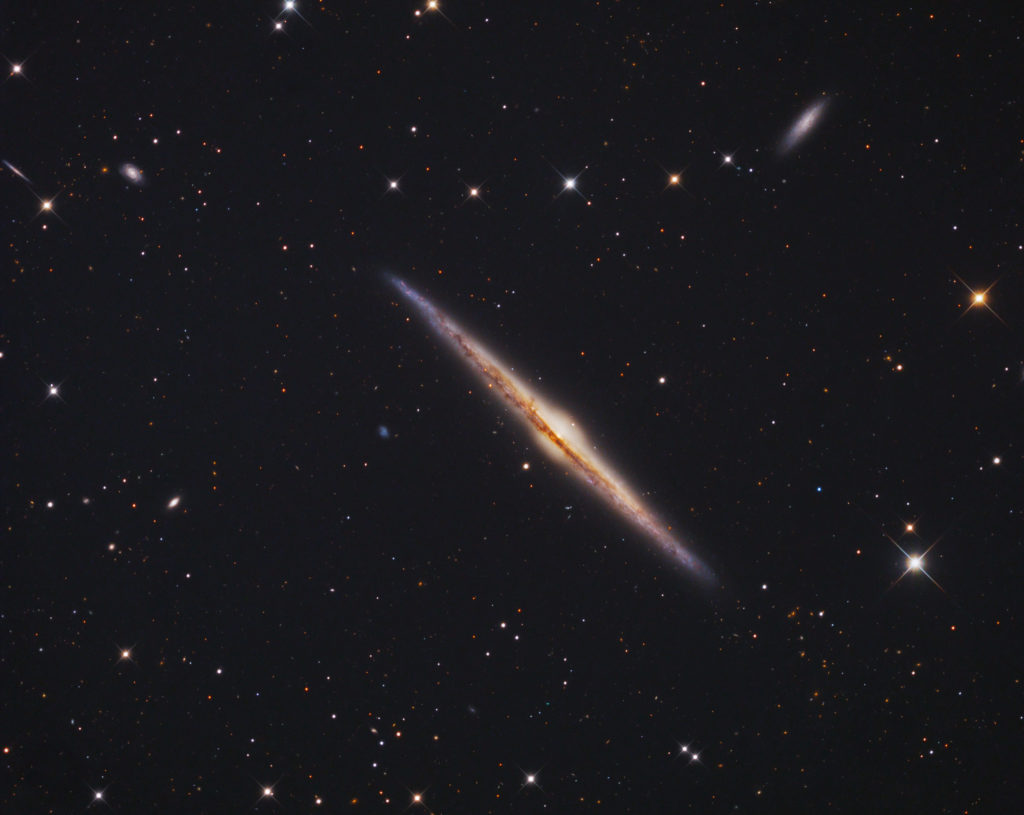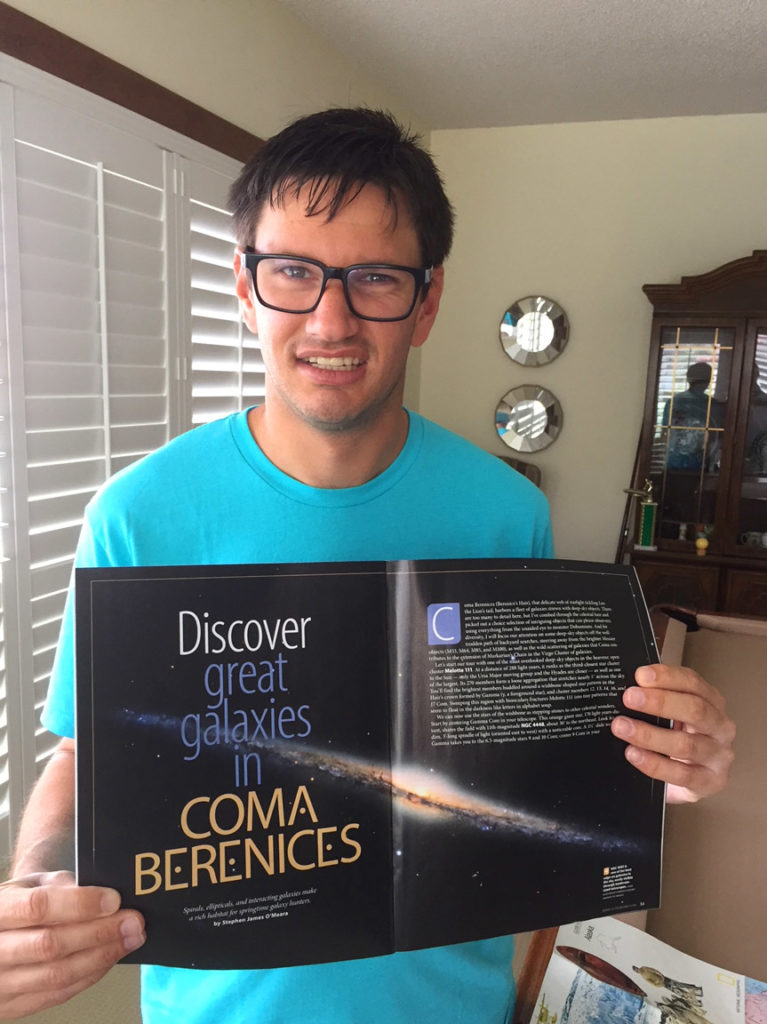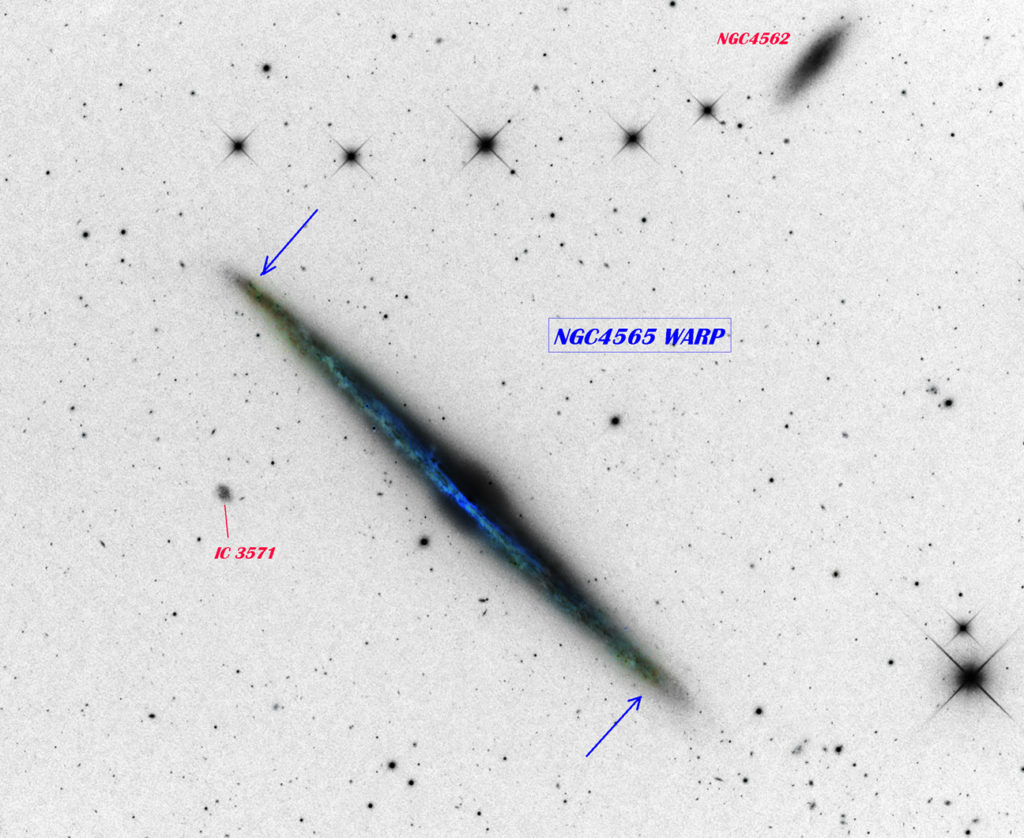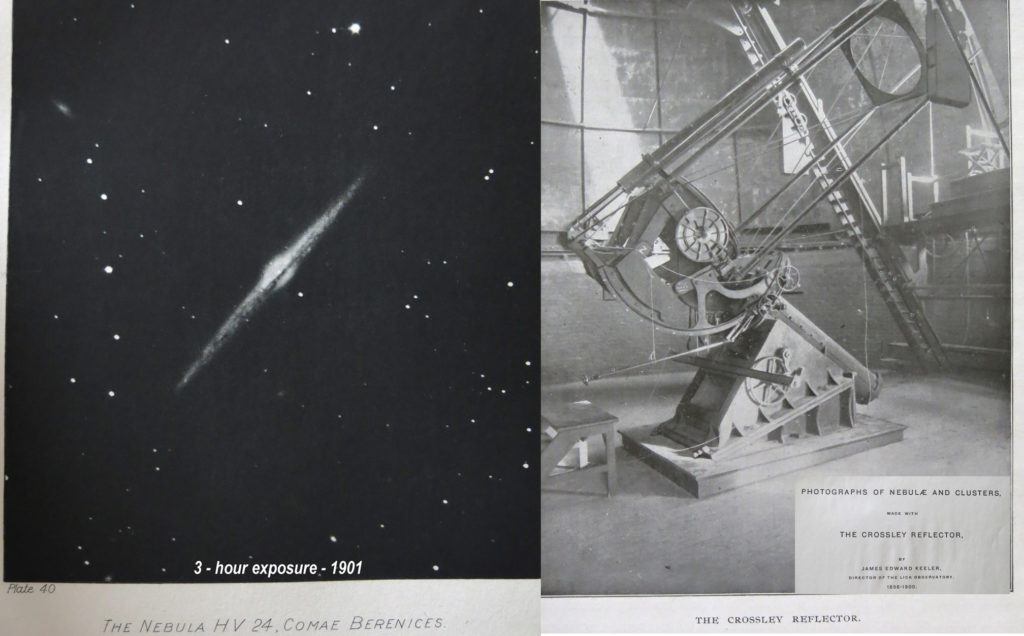Click Image to Zoom
Mouseover Image Below for Effect

Mouseover Image Below for Effect




After wrestling with atmospheric effects capturing Centaurus A deep in the south last month, I decided to test my new camera on an object high overhead. I chose large edge-on galaxy NGC 4565 (14X2.6 arcmin) which culminates at 86 degrees elevation at Chiefland early in these Spring evenings. I’ve seen this beauty many times in different telescopes visually but have never seen it as well as master observer and sketcher Raul Leon sees it undoubtedly because of his observing skills (see first link below). So I wanted to capture some photons and really study the dust lane and surrounding galaxies. Above is my 405:120:120:135 minute (13 hour) LRGB exposure – luminance at 1×1 and RGB binned 2×2. Apparent is detail in the dust, yellowish stars interior, bluish stars peripherally, some faint H-alpha regions distally as well as interacting galaxies IC 3571 and NGC 4562. I processed the background a bit bright (~25 bitspace) so you can witness the myriad of really distant galaxies! The visibility of all those tiny galaxies is not surprising since NGC 4565 is near our Milky Way north galactic pole and, therefore, we are seeing through the least local galactic dust possible. Edge-on galaxy NGC 4565 had received considerable attention as a model of early “warping” caused by gravitational effects of other nearby galaxies. Someday, NGC 4565 may be an “integral-shaped” galaxy much like UGC 3697 in Camelopardalis popularized by Barry Riu (see Amateur Astronomy mag, Winter 2015 issue). The “integraling” or warping of NGC 4565 is more apparent using radio telescope images at 21 cm (H I) rather than visual wavelengths although my LRGB image shows signs of distortion. A number of links below show the best images of NGC 4565 taken. Adam Block’s masterpiece with the 32-inch Mt. Lemmon RCOS graces a centerfold in the June 2018 issue of Astronomy magazine (see image of Brett with mag). Surprising is just how good a 3-hour exposure taken April 1901 on film at Lick Observatory with the 36-inch Crossley reflector is!! This is the earliest image I could find of this object taken from a book I have that used to reside in Lick Observatory until they discarded it and Tony Hallas kindly gave it to me (knowing I like history). These edge-on galaxies are really cool! I need to get some deep LRGB data on edge-ons NGC 3628, NGC 3115 and NGC 5866 next.
http://thestarsketcher.blogspot.com/2015/02/ngc-4565-galaxy-in-coma-bernices-mag96.html — Raul Leon’s nice drawing of NGC 4565
http://www.williamsseaandsky.com/?page_id=6942 – our website with zoom and mouseovers
https://apod.nasa.gov/apod/ap170524.html — May 24, 2017 APOD
https://www.eso.org/public/usa/images/eso0525a/ — European Southern Observatory pro image
https://apod.nasa.gov/apod/image/0404/n4565_hugo_full.jpg — April 2004 APOD – 24 inch RCOS on Kitt Peak
http://www.robgendlerastropics.com/NGC4565-BYU-S.html — 0.9 Meter BYU telescope processed by Robert Gendler
https://arxiv.org/pdf/1210.0609.pdf — Warping seen observing at H I wavelengths (radio); Fig. 1 used in making gif animation
http://iopscience.iop.org/article/10.1086/311913/pdf — “Integral” galaxy warping
https://en.wikipedia.org/wiki/Hydrogen_line — 21 cm (H I) frequency used in radioastronomy